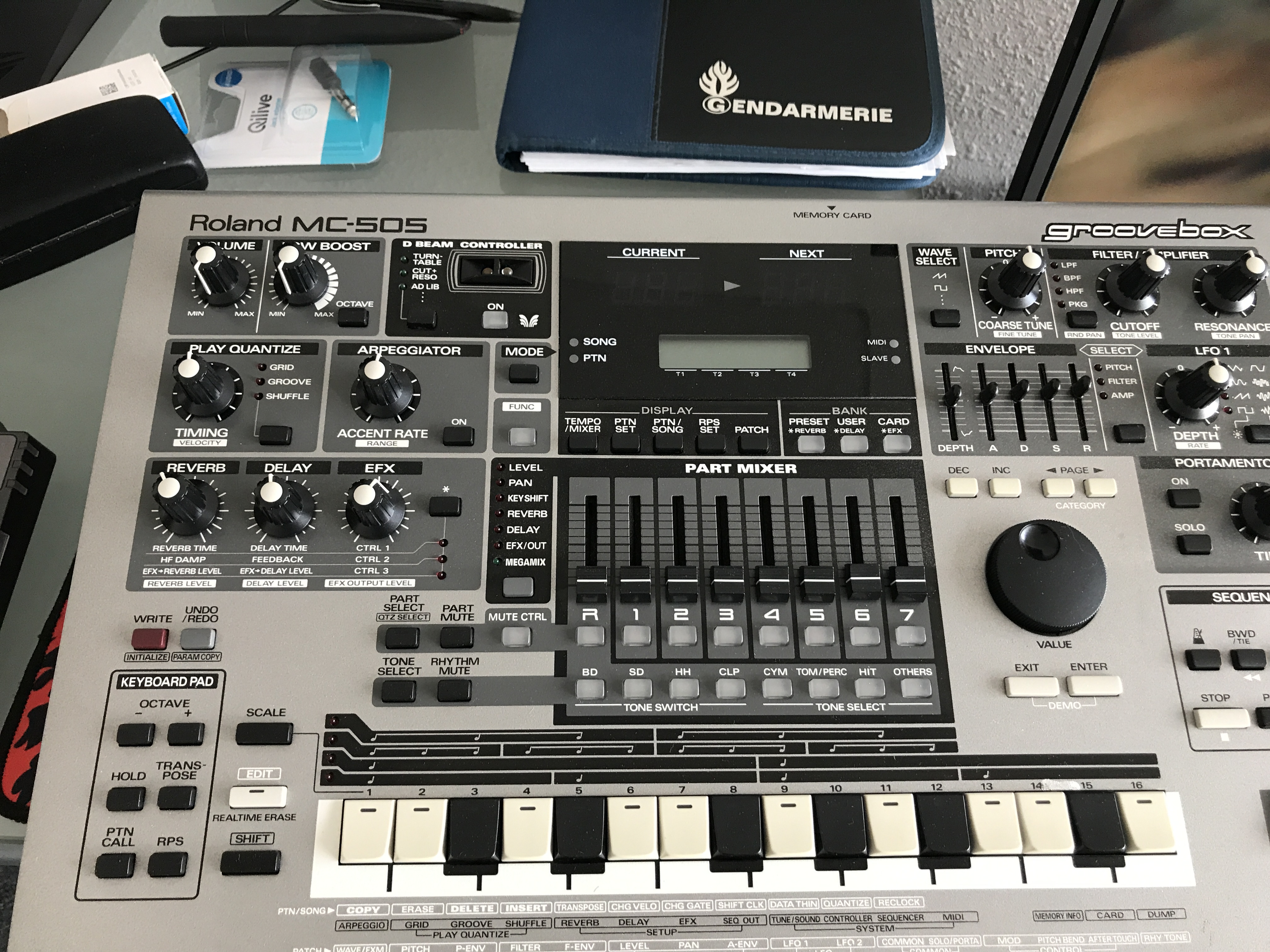
There are also fully editable effects, a programmable arpeggiator, and many performance/real-time control facilities, including two D-Beam non-contact controllers, and a turntable-emulation slider. Crammed into that 50x39cm frame are a 64-voice polyphonic, 16-part multitimbral synth engine, a stereo 16-bit sampler, and a comprehensive pattern-based 16-track sequencer with real-time pattern selection options.

Less of a Groovebox and almost more of a Groovedesk, the MC909 is an impressive-looking machine. But as computers become more ubiquitous and software more user-friendly, can a device such as the MC909 still persuade hi-tech musicians to stick with hardware? The Groovebox That Ate Manhattan For lots of reasons, the Groovebox approach has struck a chord with thousands of musicians, and this latest one lines up some new and exciting features - including sampling for the first time in an 'MC'. Since then, we've seen the MC505 (a pumped-up 303), the JX305 (an MC505 with a keyboard), the MC307 (a cutdown 505), and now the MC909, the biggest and most sophisticated of them all. The company launched the first of the family, the MC303, in 1996, which means that the line has now been going for around seven years - a long time in modern technology. Photo: Mark EwingRoland's Groovebox concept just seems to keep on grooving.


But in an increasingly software-driven world, can a Groovebox still cut it? The latest in Roland's line of MC-series workstations is their best (and most expensive) yet, incorporating synthesis, sequencing, real-time control, and sampling.


 0 kommentar(er)
0 kommentar(er)
